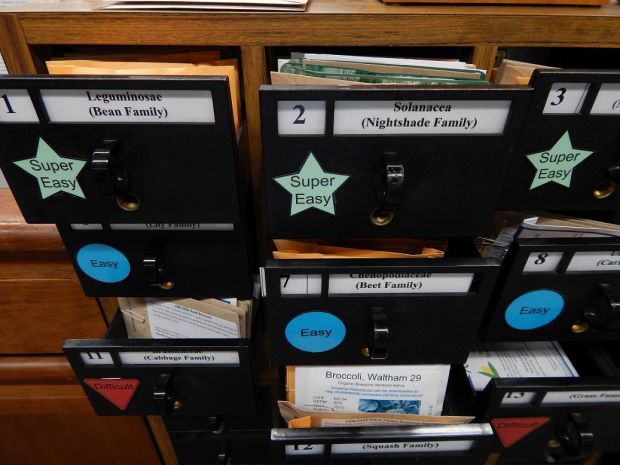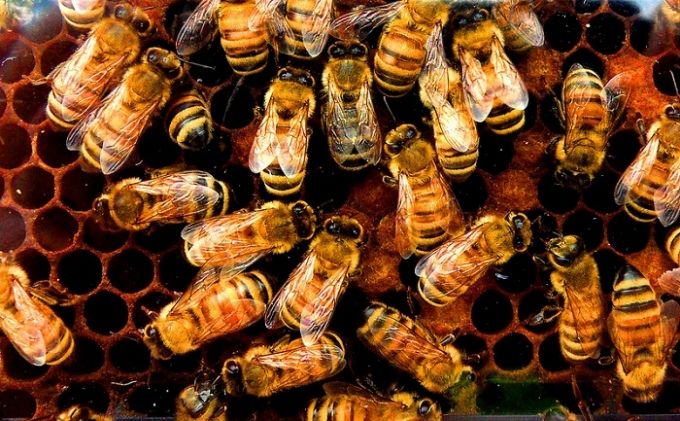Archive for the ‘environmental’ category: Page 21
Apr 23, 2015
Major advance in artificial photosynthesis poses win/win for the environment
Posted by Seb in category: environmental
Lawrence Berkeley National Laboratory
A potentially game-changing breakthrough in artificial photosynthesis has been achieved with the development of a system that can capture carbon dioxide emissions before they are vented into the atmosphere and then, powered by solar energy, convert that carbon dioxide into valuable chemical products, including biodegradable plastics, pharmaceutical drugs and even liquid fuels.
Scientists with the U.S. Department of Energy (DOE)‘s Lawrence Berkeley National Laboratory (Berkeley Lab) and the University of California (UC) Berkeley have created a hybrid system of semiconducting nanowires and bacteria that mimics the natural photosynthetic process by which plants use the energy in sunlight to synthesize carbohydrates from carbon dioxide and water. However, this new artificial photosynthetic system synthesizes the combination of carbon dioxide and water into acetate, the most common building block today for biosynthesis.
“We believe our system is a revolutionary leap forward in the field of artificial photosynthesis,” says Peidong Yang, a chemist with Berkeley Lab’s Materials Sciences Division and one of the leaders of this study. “Our system has the potential to fundamentally change the chemical and oil industry in that we can produce chemicals and fuels in a totally renewable way, rather than extracting them from deep below the ground. Read more
Apr 14, 2015
Galactic Public Archives Presents: “New Narratives: Innovation for Jobs” the series
Posted by Johnny Boston in categories: biotech/medical, business, economics, education, engineering, environmental, futurism, government, innovation, robotics/AI, sustainability
 ‘New Narratives: Innovation for Jobs’ is a series by i4j (Innovation for Jobs) and the GPA exploring perspectives on important topics that will impact the future of work, jobs and employment.
‘New Narratives: Innovation for Jobs’ is a series by i4j (Innovation for Jobs) and the GPA exploring perspectives on important topics that will impact the future of work, jobs and employment.
About i4j: (iiij.org/i4j) Innovation for Jobs conferences bring together individuals from the public and private sectors to discuss the changing economy. “We engage in initiatives creating structures for developing shared language across silos. The starting point for any innovation is the creation of shared language, enabling stakeholders and change agents to interact horizontally.”
This film was created at the Mountain View 2015 i4j Conference. What are your hopes and fears about the future of meaningful work?
Jan 4, 2015
New Book: An Irreverent Singularity Funcyclopedia, by Mondo 2000’s R.U. Sirius.
Posted by Rob Chamberlain in categories: 3D printing, alien life, automation, big data, bionic, bioprinting, biotech/medical, complex systems, computing, cosmology, cryptocurrencies, cybercrime/malcode, cyborgs, defense, disruptive technology, DNA, driverless cars, drones, economics, electronics, encryption, energy, engineering, entertainment, environmental, ethics, existential risks, exoskeleton, finance, first contact, food, fun, futurism, general relativity, genetics, hacking, hardware, human trajectories, information science, innovation, internet, life extension, media & arts, military, mobile phones, nanotechnology, neuroscience, nuclear weapons, posthumanism, privacy, quantum physics, robotics/AI, science, security, singularity, software, solar power, space, space travel, supercomputing, time travel, transhumanism
Quoted: “Legendary cyberculture icon (and iconoclast) R.U. Sirius and Jay Cornell have written a delicious funcyclopedia of the Singularity, transhumanism, and radical futurism, just published on January 1.” And: “The book, “Transcendence – The Disinformation Encyclopedia of Transhumanism and the Singularity,” is a collection of alphabetically-ordered short chapters about artificial intelligence, cognitive science, genomics, information technology, nanotechnology, neuroscience, space exploration, synthetic biology, robotics, and virtual worlds. Entries range from Cloning and Cyborg Feminism to Designer Babies and Memory-Editing Drugs.” And: “If you are young and don’t remember the 1980s you should know that, before Wired magazine, the cyberculture magazine Mondo 2000 edited by R.U. Sirius covered dangerous hacking, new media and cyberpunk topics such as virtual reality and smart drugs, with an anarchic and subversive slant. As it often happens the more sedate Wired, a watered-down later version of Mondo 2000, was much more successful and went mainstream.”
Read the article here >https://hacked.com/irreverent-singularity-funcyclopedia-mondo-2000s-r-u-sirius/
Nov 19, 2014
BitCoin, Cryptocurrency, and Blockchain Technology — FACTOM
Posted by Rob Chamberlain in categories: automation, big data, biotech/medical, bitcoin, business, complex systems, computing, disruptive technology, economics, education, encryption, engineering, environmental, ethics, finance, futurism, geopolitics, hacking, information science, law, materials, open access, policy, science, security, software, supercomputing, transparency
Quoted: “The Factom team suggested that its proposal could be leveraged to execute some of the crypto 2.0 functionalities that are beginning to take shape on the market today. These include creating trustless audit chains, property title chains, record keeping for sensitive personal, medical and corporate materials, and public accountability mechanisms.
During the AMA, the Factom president was asked how the technology could be leveraged to shape the average person’s daily life.”
Kirby responded:
“Factom creates permanent records that can’t be changed later. In a Factom world, there’s no more robo-signing scandals. In a Factom world, there are no more missing voting records. In a Factom world, you know where every dollar of government money was spent. Basically, the whole world is made up of record keeping and, as a consumer, you’re at the mercy of the fragmented systems that run these records.”
Continue reading “BitCoin, Cryptocurrency, and Blockchain Technology — FACTOM” »
Nov 18, 2014
‘Garbage Patch’ in Pacific Grows to Hundreds of Miles
Posted by Seb in category: environmental
NBCNews
Though it’s existed for decades, the swirling collection of debris particles and trash adrift in the middle of the Pacific Ocean known as the Great Pacific Garbage Patch is attracting renewed attention from scientists and environmental experts with the return of a research vessel that has been collecting data from the gyre — a circular system of rotating ocean currents — for the past several months. Charles Moore, who is credited with discovering the gyre on a yachting race in the North Pacific, led a team of scientists on a two-month expedition to the heart of the Garbage Patch beginning in July, and what they saw shocked them.
By Rebecca Morelle — BBC

“I’ve been a solar physicist for 30 years, and I’ve never seen anything quite like this,” says Richard Harrison, head of space physics at the Rutherford Appleton Laboratory in Oxfordshire.
He shows me recent footage captured by spacecraft that have their sights trained on our star. The Sun is revealed in exquisite detail, but its face is strangely featureless.
Nov 7, 2014
Plant Engineered to Supercharge Photosynthesis with Hopes of Increasing Crop Yields
Posted by Seb in categories: biological, environmental
Written By: David J. Hill — Singularity Hub
While computers scientists find new ways to supercharge computers, a team of plant scientists have demonstrated that they can supercharge a plant.
Hoping to speed up plant photosynthesis, researchers from the US and UK have successfully upgraded a carbon-fixing enzyme vital to photosynthesis in a tobacco plant with two enzymes from cyanobacteria, which function at a faster rate. If photosynthesis can be performed more efficiently, plants would grow larger and crops could have higher yields, possibly as high as 60% according to computer models.
Oct 18, 2014
Pa. department backs seed library protocol as reaction grows
Posted by Seb in categories: environmental, food, government

The Pennsylvania Department of Agriculture sees its new protocol for seed libraries as an opportunity to safely regulate them while saving an organization or person from liability.
Proponents of seed libraries, however, see the department’s efforts as a way to effectively shut down movement to grow and maintain local seed varieties.
The issue at hand stems back to April 26, when the Joseph T. Simpson Public Library opened a seed library, in which it would allow residents to “borrow” seeds and then offer seeds back to the library to start the process over again. It’s the second part of that process that caught the attention of the Pennsylvania Department of Agriculture, which then contacted the Cumberland County Library System to rectify what it saw as a violation of the Pennsylvania Seed Act of 2004.
Oct 16, 2014
Spider Venom May Save the Bees: New Bio-Pesticide Could Preserve Honeybee Populations
Posted by Seb in category: environmental
Catherine Griffin — Science World Report

Could spiders save the bees? They just might. Scientists have created a novel bio-pesticide with the help of spider venom and a plant protein. The new pesticide is actually safe for honeybees, despite being highly toxic to a number of key insect pests.
Honeybees perform sophisticated behaviors while foraging. These behaviors, in part, are why they’re so successful. With their ability to pollinate key crop species, these insects are crucial for our food industry. And yet bee populations have been declining due to climate change and an increased use of pesticides, which can interrupt their key behaviors.







